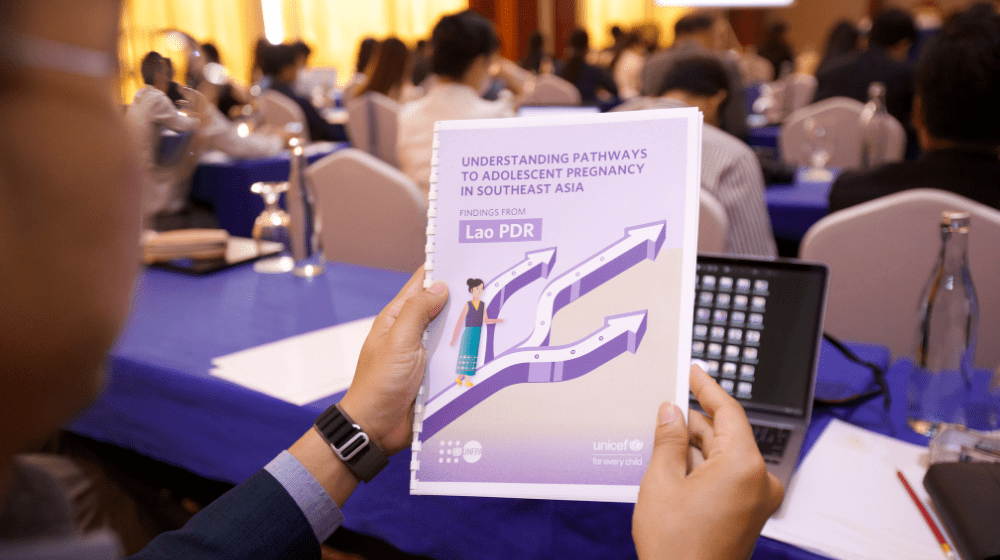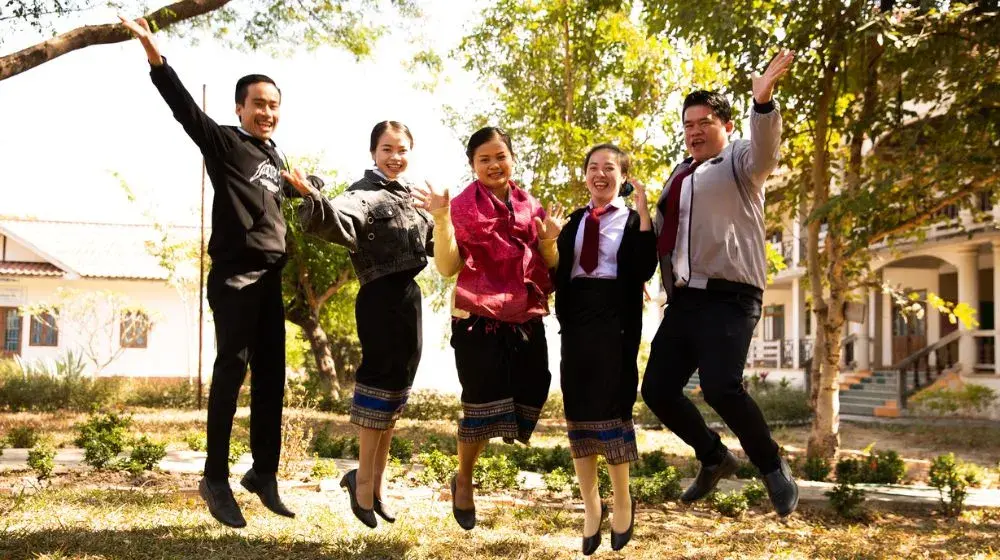Vientiane, 4 April 2024 – The Government of Lao PDR, in partnership with UNFPA and UNICEF, today announced the release of a critical report, ‘Understanding Pathways to Adolescent Pregnancy in Southeast Asia: Findings from Lao PDR’. This collaborative effort marks a milestone in addressing the pressing issue of adolescent pregnancy through comprehensive research and analysis. 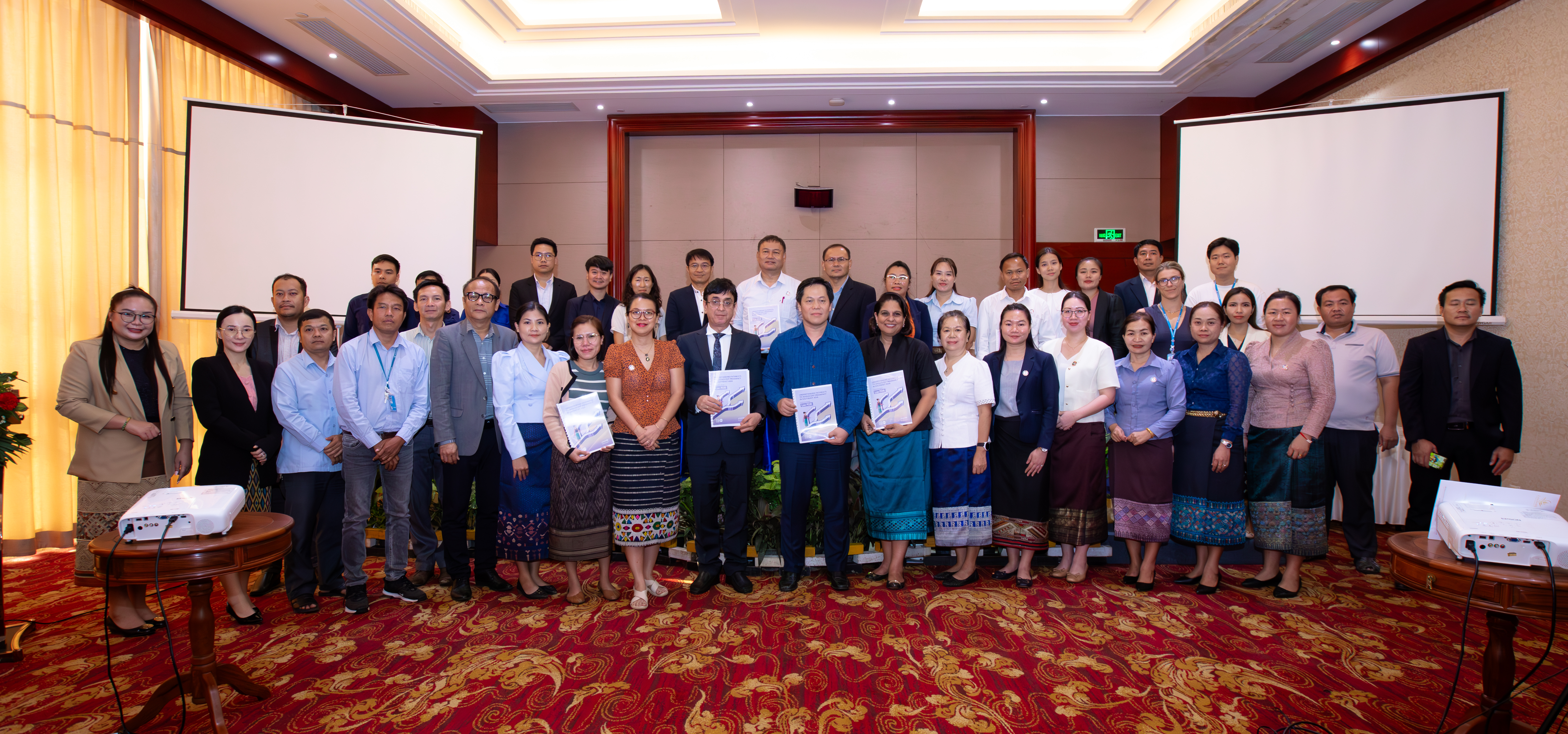
Lao PDR has the highest child-marriage and adolescent pregnancy rates in the region with 30.5 percent of women being first married before the age of 18 and 17.4 percent having their first child before age 18, according to the latest data from the third round of the Lao Social Indicator Survey (LSIS III). Concerningly, LSIS III data show that the fertility rate for adolescent girls and the rate of girls 15-19 years old currently married are increasing. As such, this new study provides invaluable insights into the factors leading to adolescent pregnancy, both within and outside of marriage, and paves the way towards a better future for adolescents in Lao PDR.
"The Government of Lao PDR is deeply committed to addressing adolescent pregnancy and child marriage through integrated strategies and evidence-based interventions. The insights from this report are invaluable in guiding our efforts towards ensuring a healthy and promising future for our young population," said Dr. Sitthiroth Rasphone, General Director of the Development Research Institute (DRI), Ministry of Planning and Investment.
The report, supported by the Government of Australia and launched at a national event attended by government officials, development partners and stakeholders, delves into the multifaceted factors contributing to adolescent pregnancy in Lao PDR. The first factor is the acceptance of child marriage, which is a child rights violation that robs girls of their childhood and threatens their well-being. Evidence shows that girls who marry before 18 years old are more likely to drop out of school and have worse economic and health outcomes than their unmarried peers. Girls also have higher risks of complications during pregnancy and childbirth than adult women.
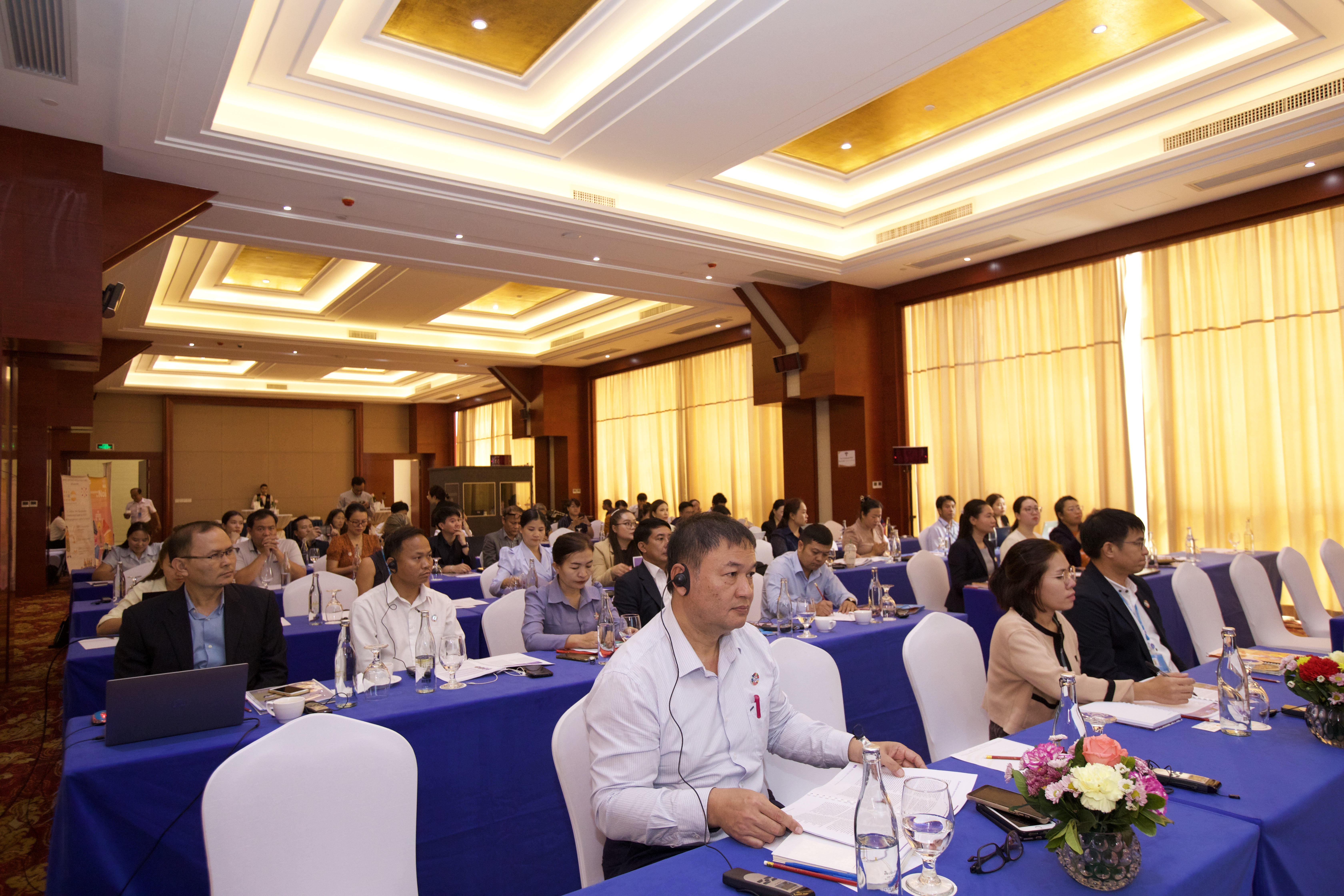
Other factors leading to adolescent pregnancy, identified by the study, are barriers to sexual and reproductive health services and information, male’s control over reproductive decision-making, alcohol use driving pressured or forced sex and gender discriminatory attitudes and norms. School dropout and poverty were also recurrent issues in girls’ pathways to adolescent pregnancy.
This initiative is part of the broader efforts to empower adolescent girls and prevent early pregnancies, aligning with the Government of Lao PDR's Noi Framework, the Sustainable Development Goals (SDGs) strategies and the commitments of Lao PDR to the International Conference on Population and Development Program of Action, aiming to end all harmful practices faced by adolescent girls.
Bakhtiyor Kadyrov, UNFPA Representative in Lao PDR states: “This report is a testament to our collective resolve to understand and address the drivers of adolescent pregnancy in Lao PDR. By focusing on the root causes and engaging adolescents in developing solutions, we can create a conducive environment for their empowerment and well-being.”
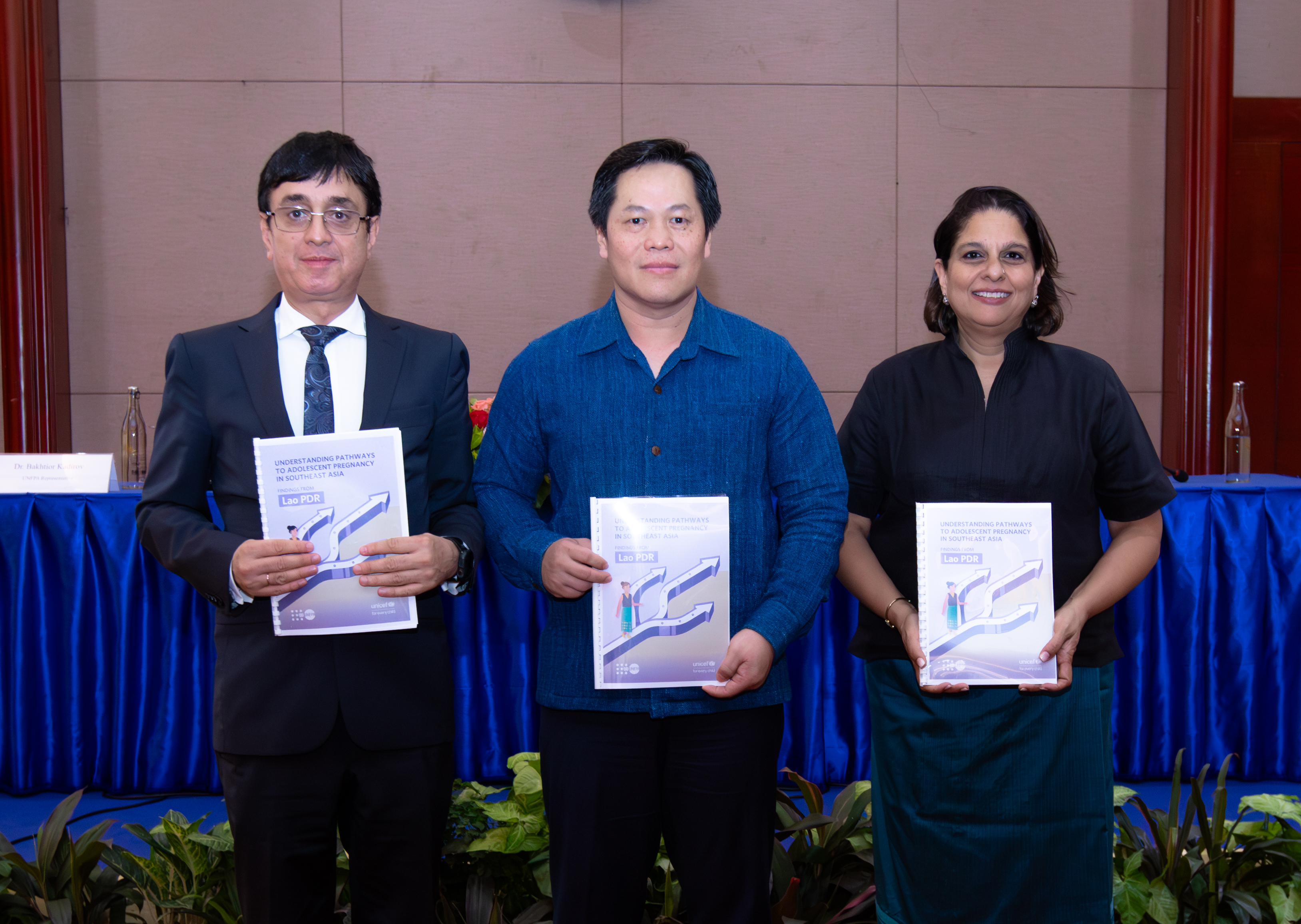
Since 2016, the Lao Government has embraced the Noi Framework, a holistic strategy aimed at safeguarding adolescent girls from early pregnancy and integrating their needs into the national SDGs implementation plans. This approach underscores the importance of a multi-dimensional response to adolescent pregnancy, emphasizing prevention, education, and support services. These commitments were reiterated by the Government of Lao PDR at the National Conference on Population and Development in late 2023.
"Motivated by the aspiration for a brighter future for every girl in Lao PDR, we're mobilizing alongside the Government of Lao PDR and our partners to tackle the issues of child marriage and adolescent pregnancy directly," said Dr. Pia Rebello Britto, Representative to UNICEF Lao PDR. "We are accelerating action by leveraging available evidence to empower young girls and build their skills, to foster supportive family environments and parenting alongside strengthening education systems to act as safeguards against child marriage. We are transforming challenges into catalysts for change."
The study identifies key pathways to adolescent pregnancy and offers tailored policy and programming recommendations to address this complex issue effectively. It emphasizes the need for accessible, high-quality sexual and reproductive health information and services, as well as interventions to challenge social norms supporting child marriage and discouraging contraceptive use among adolescent girls, boys and their families. Programming strategies should also address other socio-cultural and financial drivers that are critical in girls’ pathways to adolescent pregnancy, including school dropout and poverty.
____
UNFPA, the UN's sexual and reproductive health agency, works in over 150 countries, including Lao PDR, to achieve zero maternal deaths, zero unmet need for family planning and zero gender-based violence.
For more information, please contact:

